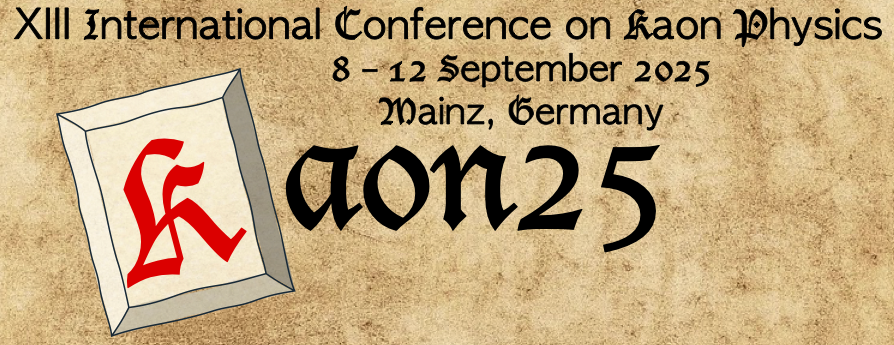The $K^{+}\rightarrow\pi^{+}\nu\bar{\nu}$ decay is a golden mode for flavour physics. Its branching ratio is predicted with high precision by the Standard Model to be less than $10^{-10}$, and this decay mode is highly sensitive to indirect effects of new physics up to the highest mass scales. A new measurement of the $K^{+}\rightarrow\pi^{+}\nu\bar{\nu}$ decay by the NA62 experiment at the...
The KOTO experiment at the J-PARC is dedicated to searching for the rare decay $K_L\rightarrow \pi^0\nu\bar{\nu}$.
In the analysis of the data taken in 2021, no signal candidates were observed, and the world-best limit of $2.2×10^{-9}$ on the branching ratio was set at the 90% confidence level.
After the data taking in 2021, we improved our detectors to further suppress the charged kaon...
I present resent updates on the SM predictions of the rare K->pi nu nu modes and discuss how the distributions at NA62 can be used to disentangle the contributions from SM-like operators with contributions from NP operators.
New Physics is generically expected to mostly couple to third generation fermions to avoid stringent bounds, e.g. from Kaon physics, but should induce correlated deviations also in other flavour observables. Investigating and quantifying such correlations is important to understand the flavour structure of New Physics and to steer the model building. We consider examples of EFT scenarios that...
The Belle and Belle II experiments have collected a 1.2 ab$^{-1}$ sample of $e^+ e^-\to B\bar{B}$ collisions at a centre-of-mass energy corresponding to the $\Upsilon(4S)$ resonance. These data, with low particle multiplicity and constrained initial state kinematics, are an ideal environment to search for rare electroweak penguin $B$ decays and lepton-flavour-violating $B$ decays to final...
We discuss the constraints on new physics affecting s to d l lbar processes from rare kaon and hyperon decays as well as high pT observables at LHC. Although, in general, the constraints from rare kaon decays are the strongest ones, we emphasise the complementarity of all observables in order to cover the complete parameter space of dimension six Wilson coefficients.
xxx
Precision flavour observables, such as CP violation in meson mixing, place stringent constraints on physics beyond the Standard Model. Matching the experimental accuracy of these observables requires equally precise theoretical inputs, combining high-order perturbative calculations with non-perturbative results from Lattice QCD. In this talk, I will present the two-loop matching calculations...
The rare radiative $K\to\pi\ell^+\ell^-$ decays ($\ell=e,\mu$) provide experimental access to the $K\to\pi\gamma^*$ transitions, and comparing the two channels allows for a stringent test of lepton-flavor universality. Although the underlying $K\to\pi\gamma^*$ conversions have been studied extensively, for instance the radiative corrections for the $K^+\to\pi^+\ell^+\ell^-$ decays involve the...
A description of the two form factor $W_+$, $W_S$, associated with the radiative decays of the $K^+$ and the $K_S$, based on general properties of analyticity and unitarity is proposed. Starting from the simple consideration of the asymptotic behaviour of the two combinations $2W_+ - W_S$ and $W_+ + W_S$ we derive a dispersive representation involving only two parameters. Using the rich...
I will review recent studies of the sensitivity of future measurements in the $K\to\mu\mu$ system to short-distance parameters. I will introduce a method to present kaon CKM observables in a way that is independent of any B physics inputs, and discuss the arising picture and the status of the kaon program.
In this talk, we will present the improved Standard-Model predictions for $K_L \to \ell^+ \ell^-$ decays, making use of a dispersive representation of the underlying transition form factor that incorporates the constraints from the available data and the asymptotic behavior. The precise determinations of the Standard-Model branching fractions will be contrasted with the existing measurements....
The decay of a long-lived kaon to a pair of muons (KL2mu) could serve as a precision test of the Standard Model (SM) and a probe to physics beyond due to its sensitivity to physics at high energies. A precise determination of the size of the long-distance, two-photon contribution to KL2mu -- as well as its interference with the analytically-computable short-distance (SD) contribution -- are...
